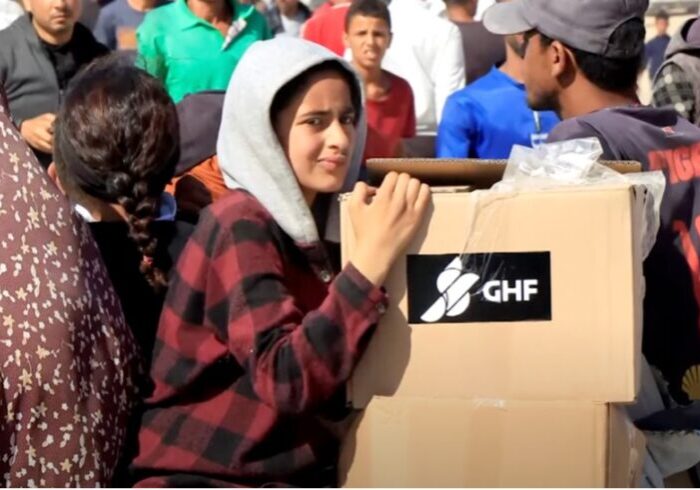Australia/Israel Review
A Period of Quiet Ahead?
May 24, 2023 | Yaakov Lappin

On the day that a truce between Israel and the Iranian-backed Palestinian Islamic Jihad (PIJ) group in Gaza took hold, it was already clear that the escalation which took place from May 9 to May 13 wouldn’t change the situation in the Gaza Strip. However, it does offer the potential of an extended period of quiet and stability for Israel’s south.
At the same time, “Operation Shield and Arrow” carried broader messages to larger Israeli adversaries – Hamas in Gaza, which stayed out of the fighting despite its declarations of solidarity with PIJ, and Hezbollah in Lebanon.
The Israel Defence Forces together with the Shin Bet intelligence agency exhibited a high degree of military intelligence and matched that intel with precision firepower strikes that eliminated PIJ’s Gazan terrorist leadership. The opening strike alone delivered a shock to PIJ, as its three top military-terrorist leaders were eliminated in the space of three seconds, in three separate locations.
The tactics employed by PIJ are the same as those used by other members of the radical Iranian-backed axis: Human shields – planting rocket launchers and weapons production centres in civilian areas; widespread indiscriminate rocket fire on Israeli population centres; and seeking to flood Israeli air defences; though the level of capabilities possessed by each adversary varies greatly. Hamas is several times more powerful than PIJ; Hezbollah is much more powerful than Hamas.
Since the start of the operation on May 9, the Israel Air Force, together with the IDF’s Southern Command and Military Intelligence Directorate and others, came together to demonstrate to all Middle Eastern terror armies that these tactics will not be effective.
On May 2 and the next few days, PIJ fired dozens of rockets at the city of Sderot in the middle of the day, when Israeli children were heading home from school. It wasn’t the first time. Israel previously responded to such attacks by striking Hamas, as the sovereign of Gaza, in an effort to make it restrain PIJ, which has in the past been compared to a pyromaniac at a gas station.
But after the May 2 attack, Israel made a different decision. According to an Israeli military official, the decision was made that it was time to act against PIJ directly, which was destabilising the area, in order to avoid entering into a larger escalation with Hamas, which would be far more destructive.
Human shields
Hence, on May 9, Israel began targeting PIJ commanders, after spending a week gathering data on their locations and waiting for conditions that would create minimal risks for Palestinian noncombatants, according to the official. PIJ uses women and children as human shields as its combat doctrine, both routinely and in time of war.
“Even now we saw that they conduct command and control from apartments, with their own families inside. They drive from apartment to apartment with their families in the car,” said the official. “That creates a bigger challenge.”
A total of nine Gazan noncombatants were killed by IDF attacks, and another four were killed by failed PIJ rocket launches.
Twenty-one combatants from PIJ and other groups were killed, including six senior PIJ commanders, most from the faction’s rocket division.
Two civilians were killed in Israel; an 80-year-old woman in the city of Rehovot, when a rocket smashed into her living room, and a Gazan worker in the western Negev (while his brother, also a Gazan worker, was seriously injured).
In five days of conflict, PIJ fired 1,469 rockets at Israel, of which 1,139 crossed into Israel (there were also 291 failed launches, 20% of all PIJ rockets).
Iron Dome intercepted more than 95% of rockets heading for built-up areas. The longer-range David’s Sling system intercepted two rockets, making its operational debut. The IDF struck more than 371 PIJ targets, including command and control apartments, usually located in one- to three-storey residential buildings, which the IDF warned so they could be evacuated before the aerial attacks.
The strikes on military leaders and command and control centres placed PIJ under pressure, ultimately pushing Beirut-based PIJ leader Ziyad al-Nakhalah to accept a truce, according to an Israeli official. Hamas pressure likely played a role in al-Nakhalah’s decision as well.
Gaza will remain a hornet’s nest of terrorism where Islamist factions hold hostage 2.3 million civilians and use them as human shields to threaten millions of Israelis, all using Iranian funding and know-how.
“Operation Shield and Arrow” was not designed to change that basic reality. But as a byproduct, larger Israeli adversaries, Hamas and Hezbollah, witnessed Israeli determination to eliminate those who threaten Israeli security, to overcome the human shield tactic, and to employ world-leading intelligence and firepower capabilities in urban warfare settings.
The threat to the safety of their own terror commanders, operatives and assets will not have been missed.
Yaakov Lappin is an Israel-based military affairs correspondent and analyst. He is the in-house analyst at the Miryam Institute, a research associate at the Alma Research and Education Centre, and a research associate at the Begin-Sadat Centre for Strategic Studies at Bar-Ilan University. © Jewish News Syndicate (JNS.org), reprinted by permission, all rights reserved.
Tags: Gaza, IDF, Palestinian Islamic Jihad






